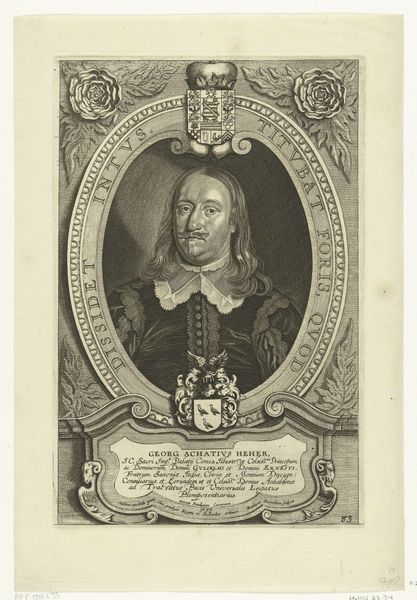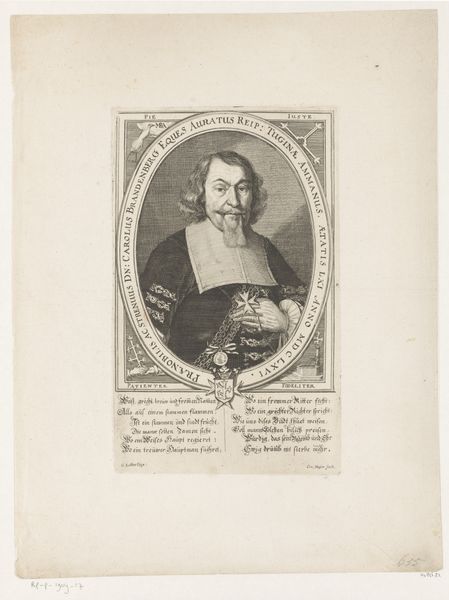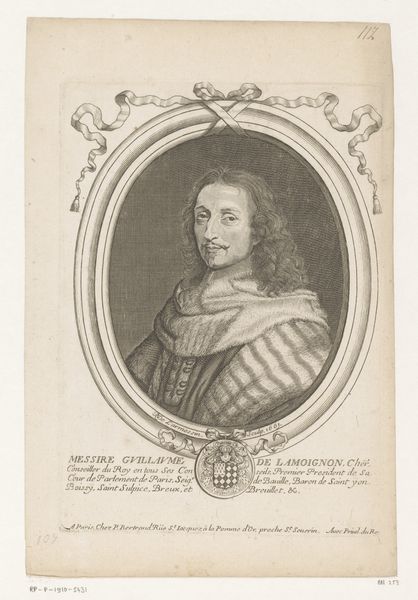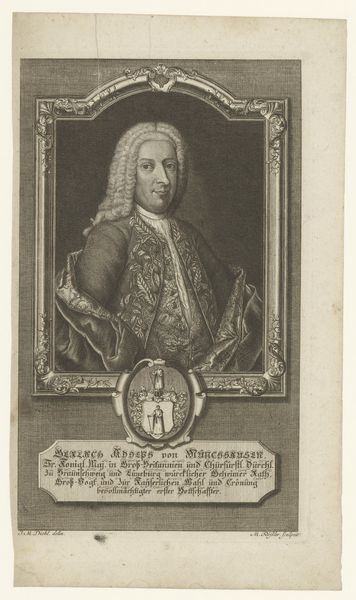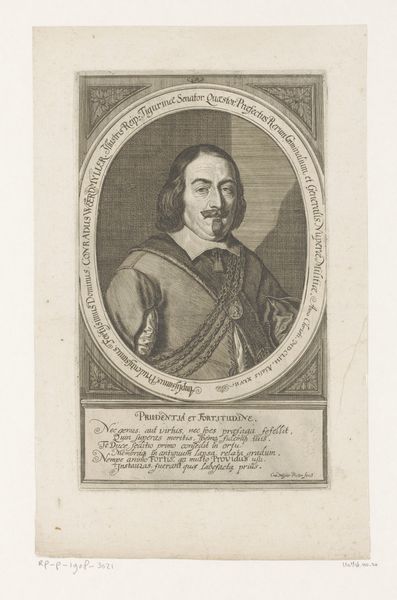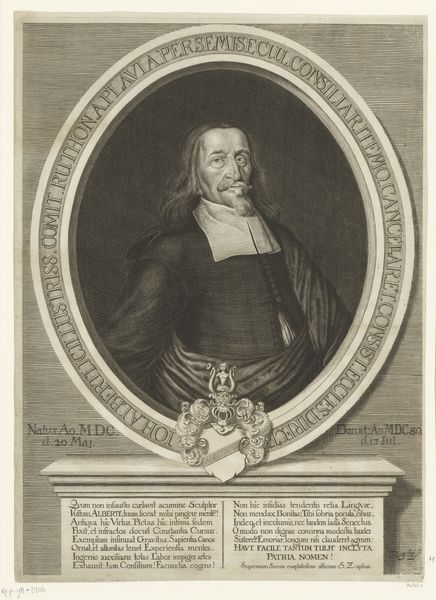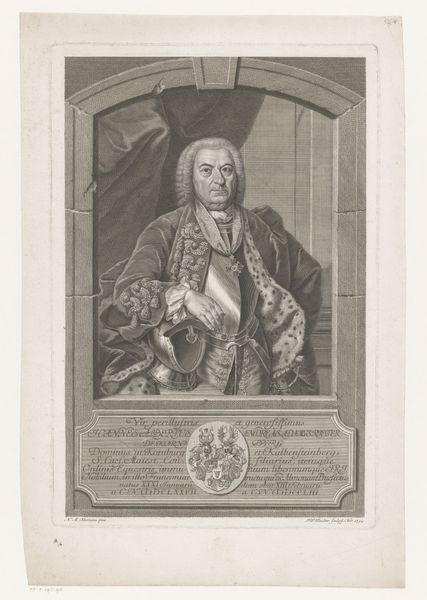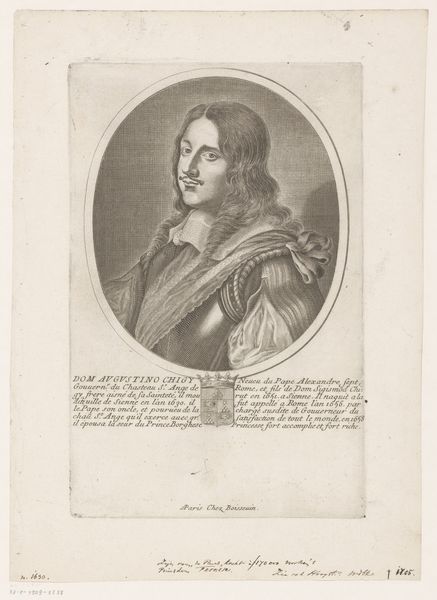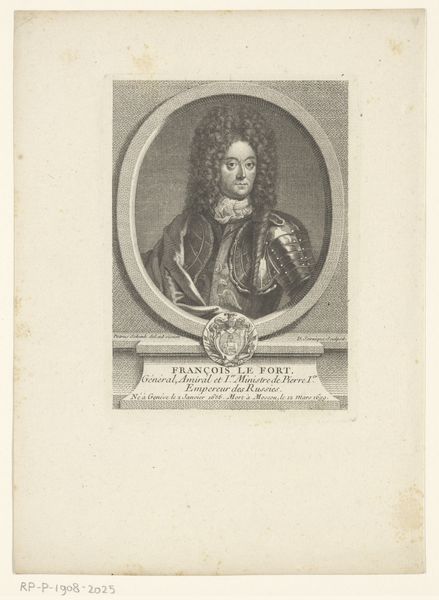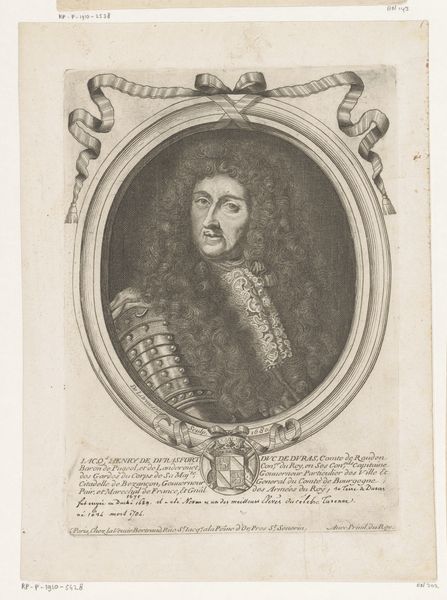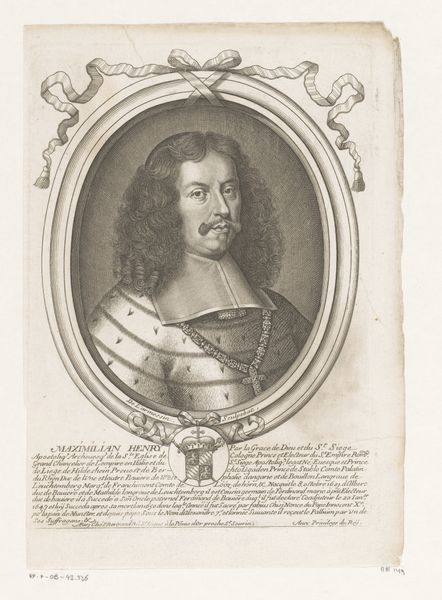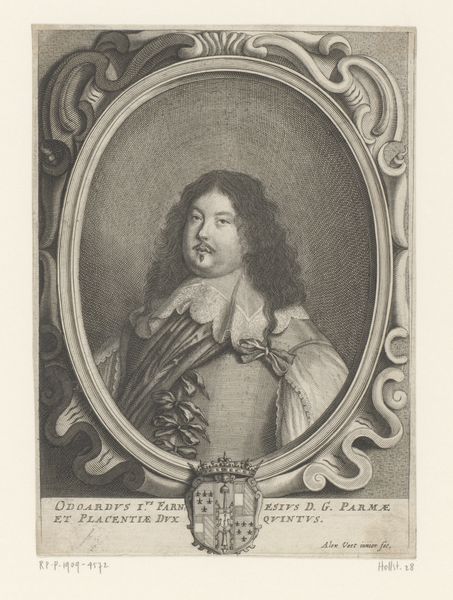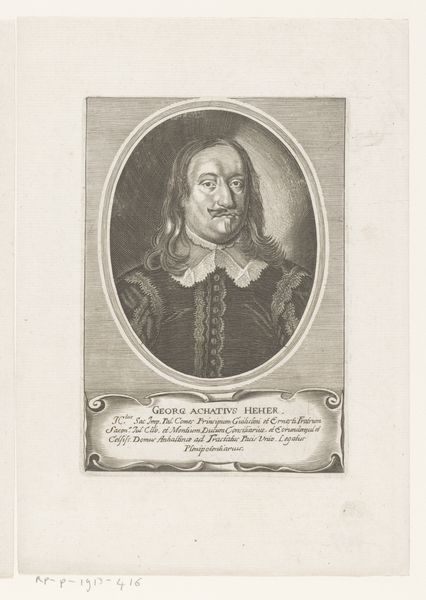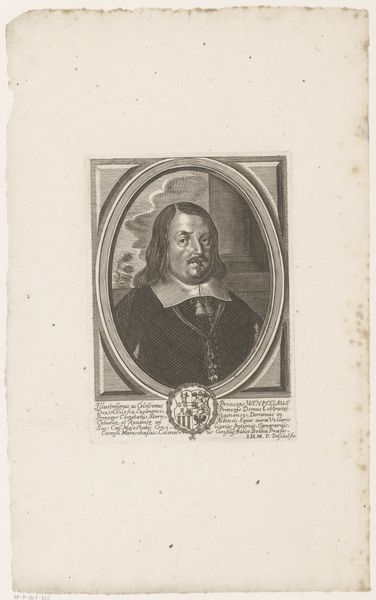
print, engraving
#
portrait
#
baroque
# print
#
old engraving style
#
personal sketchbook
#
14_17th-century
#
engraving
Dimensions: height 249 mm, width 151 mm
Copyright: Rijks Museum: Open Domain
Curator: Here we have Conrad Meyer's "Portret van Johann Kambli," created in 1674. It's an engraving, a print. Look closely at the way he rendered the texture of the clothing with such precise lines. Editor: It has such a stoic air! Very serious, though almost a dreamlike quality permeates this engraved image. Curator: Yes, the weight of social expectation is literally etched into the plate! Engravings like this involved intense labor, both in the design and the cutting of the lines. This wasn't just artistic expression; it was skilled craftsmanship meant for mass production, in a sense. Prints like this spread Kambli’s image around his community. Editor: I suppose the detail comes from that craftsmanship, yes. Those fine lines capture everything from the glint of his jewelry to the slight furrow of his brow... all these little precise marks add up to, somehow, reveal so much. He’s posed heroically—an interesting contradiction with the medium, almost. What a task—almost Sisyphean—to etch that with your hand! Curator: Think of the networks involved! Paper production, ink, the printing press itself, and the distribution networks necessary for prints to circulate! These material elements underpin the circulation of knowledge and status during that era. It represents not only artistry but industrial development, reflecting a market where status and recognition were literally reproduced and circulated as a commodity. Editor: Maybe it’s knowing how much intense labour went into this particular form, but there is a profound humanness to it, like a meditation of hands, eyes, the paper, and its future… It adds such complexity of presence. And the writing—is that Latin, German? Curator: Yes, both! The Latin phrases above and below the oval frame translate roughly to "For God and Fatherland," and "Not in Vain," hinting at his public service, as Landammann of Glarus, a high administrative role. The other lines provide context that reinforce and affirm his identity. Editor: It gives you chills—knowing a little something about the hands and machines behind it! I keep noticing that tension between art and industry. Almost tragic. Curator: It highlights art's position within larger systems, doesn't it? Editor: Absolutely! Curator: Precisely. It allows a unique glimpse into the tangible conditions that shaped his life. Editor: Absolutely! It stays with you somehow.
Comments
No comments
Be the first to comment and join the conversation on the ultimate creative platform.
